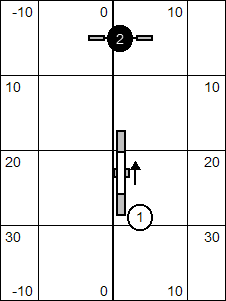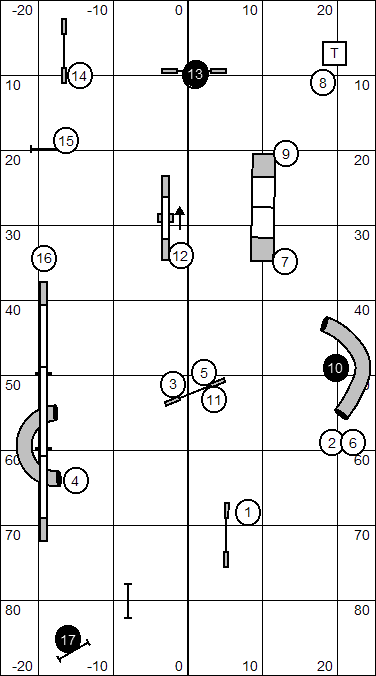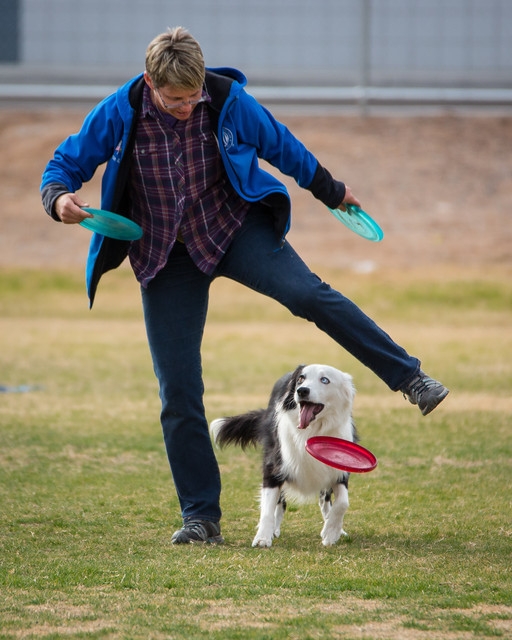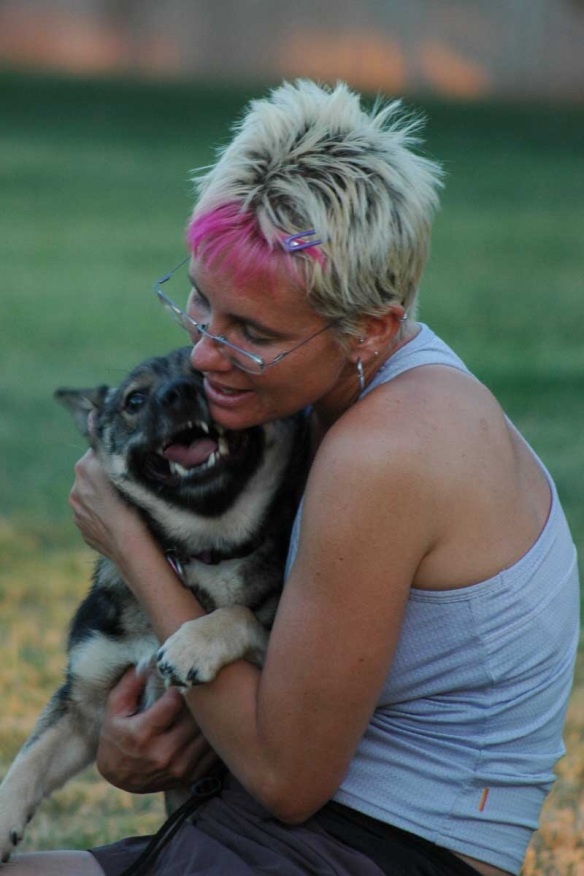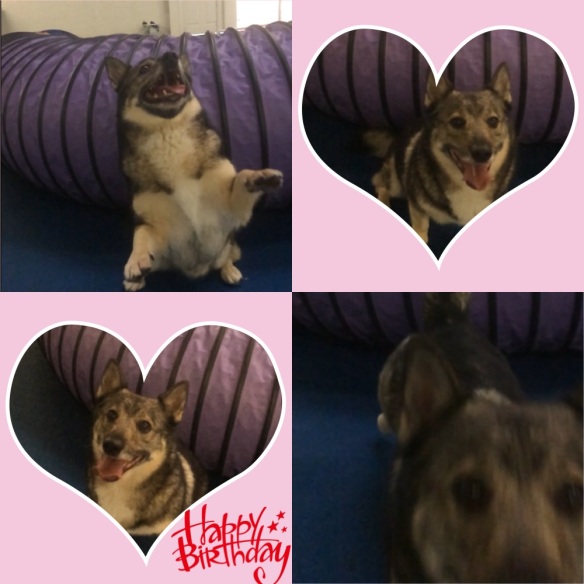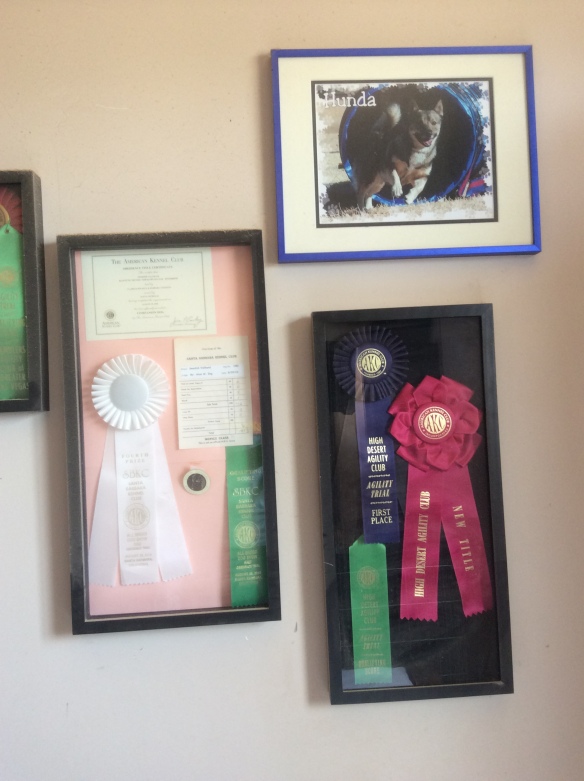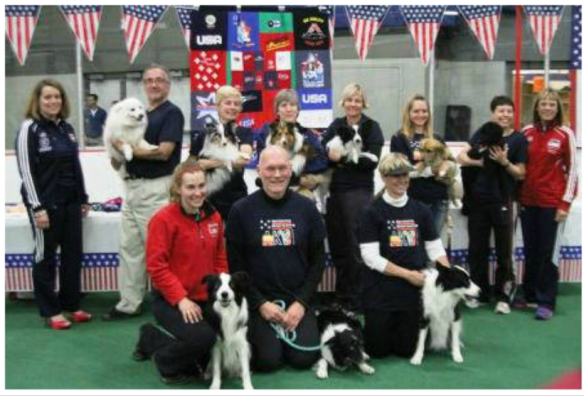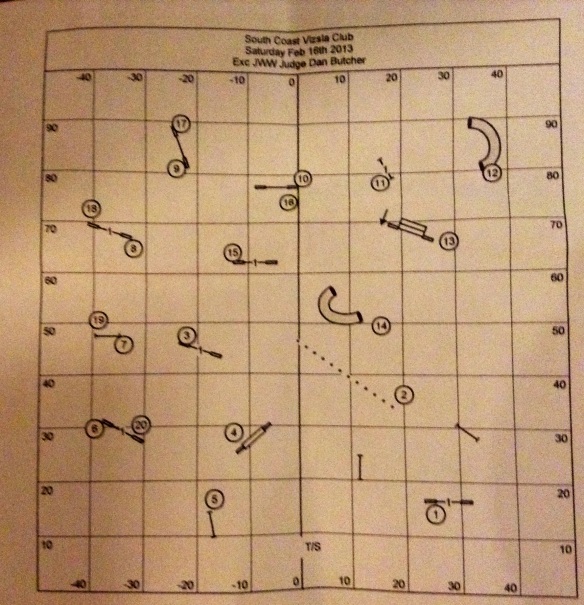***Disclaimer- I am teaching you how to play Snooker with your dog’s happiness as a priority and to get a Q. If you want to learn Snooker strategy to win and get Super Q’s, please read Dave Hanson’s Snooker article at http://www.usdaa.com/binary/files/SnookerHanson.pdf
Snooker is a game played in USDAA agility. It involves an opening of the handler’s choice and a closing of the judge’s choice. Red jumps are taken, and IF completed successfully, allow the opportunity of taking a numbered/colored obstacle. In the opening, numbered/colored obstacles, earn points if completed successfully. If NOT complete successfully in the opening, you earn no points but can continue. In the closing, if a numbered/colored obstacle is NOT completed successfully, the whistle blows.
ALWAYS read your Snooker course map and go to the briefing so you will know if it is 3 reds, 4 reds OR 3 or 4 reds, (or 4 of 5 reds, or…)! You also need to know the time set for the course, as well as any other judge specific rules (#6A and #6B must be taken in flow, or combo #5 is any jump weaves, etc.)
It is best to look at designing your Snooker strategy by working BACKWARDS from the closing. Always look at the closing, determine where number 2 is and how is the best way to get there from your opening.
Pick an opening sequence that utilizes FLOW. Even a Super Q can happen with a course that runs smoothly. In Advanced and Starters, FLOW should be the number one priority! Get your minimum points on a course that allows your dog to work in extension, keep it safe and fun!
You only need 37 points to qualify in Snooker. If you make it through the closing to number 7 you have earned 27 points; you only need 37 to qualify, so that makes a total of 10 points needed in the opening. Or you could plan on getting through number 5 in the closing, and then you would need 23 points in the opening. Or. Or. Or. Get out a calculator!!
Red jumps are worth 1 point and if taken successfully, allow you to take a numbered/colored obstacle for points. YOU CAN ONLY TAKE A RED JUMP ONCE IN THE OPENING.
Start with the hardest to get to red jump and end with the red jump that flows into the number 2 of the closing.
Your course needs to consist of the following: red jump, numbered/colored obstacle, red jump, numbered/colored obstacle, red jump, numbered/colored obstacle, 2, 3, 4, 5, 6, 7.
Think of the opening and the closing as a course! Renumber it on your course map starting with 1 and ending with whatever number gets you to the last part of the closing. I know you are allowed to “think on your feet” in snooker, but some dogs can’t handle the stress and will shut down. I do not “think on my feet” with those dogs. I run my course and leave if a whistle sounds! I do not sacrifice my dog’s happiness and speed for anything!
Technically you can go to another red if your dog has performed a red incorrectly by knocking it. I reserve this strategy for DAM/PVP. Again, I run my course in flow and if the whistle blows, I leave!
**Try to plan a course that is do-able for your dog; don’t plan on 3 weave poles when your dog misses entries. Make sure you can complete the course in the time allotted, weaves and contacts take longer than jumps and tunnels!
Refusals do not count in the opening, and do count in the closing.
If you fault a numbered/colored obstacle, you MUST complete it in the opening.
Snooker Checklist
- Find hardest red jump, start your opening with that jump
- Find #2 obstacle, plan to end your opening close to #2
- Walk the closing
- Plan an opening with flow
- Re-number your course map
- Memorize the opening and closing as one course
- Plan a reasonable course for you and your dog’s skills
- Leave when the whistle blows
Here is a fun course from cynosports 2014 to study and come up with a plan that has FLOW and is FUN for your dog!
Here is Eric’s briefing:
Start jump is bidirectional, must be taken to start your run and if taken again, ends your run! The finish jump is live at all times and will end your run!
3 or 4 reds!
Combos are bidirectional in the opening!
Times:
- Champ 26/22 and P 20/16 45 secs
- Champ 18/16 and P 12 50 secs
- Champ 14/12 and P 8 55 secs


